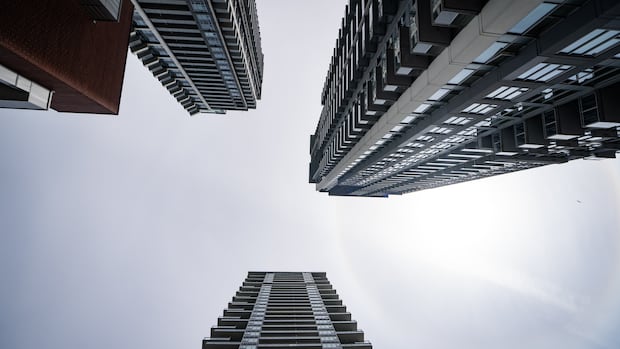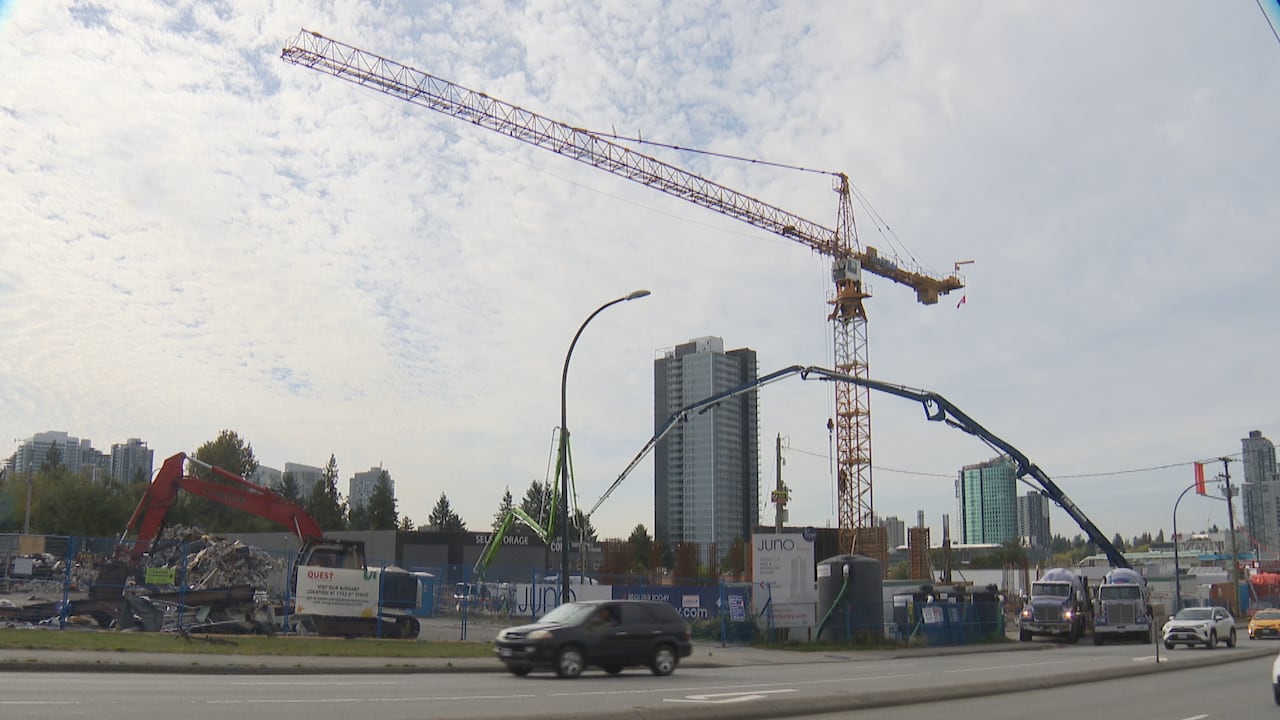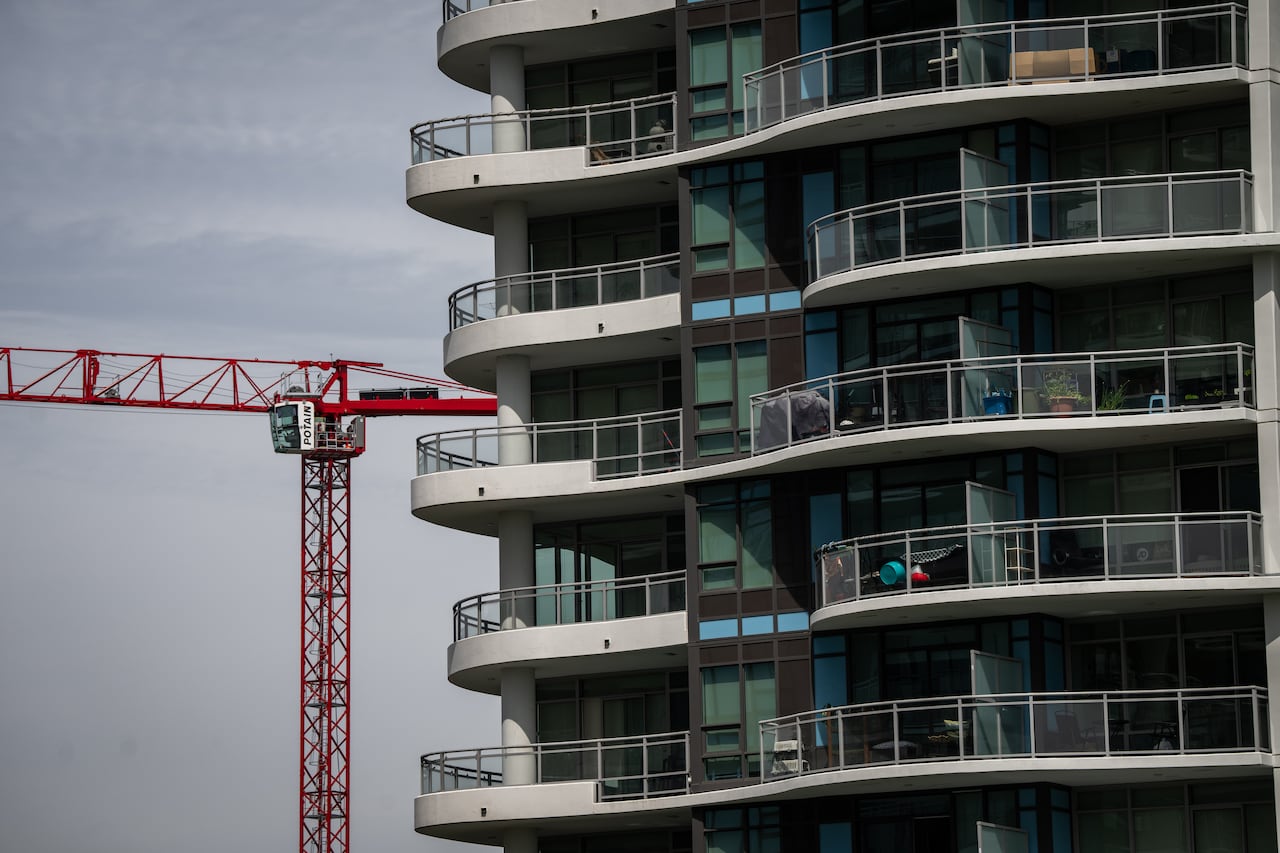
It didn’t take long for Jonathan Meads’ future Surrey, B.C., high rise to hit its condo presale targets last year, giving the developer the green light to start building.
“We hit the presale requirement very quickly, four months,” said Meads, noting that developers typically need to sell about 60 per cent of their units to secure construction financing. “We were one of the last three high rise towers [in Metro Vancouver] to truly hit that last year.”
Construction for the project is moving full steam ahead, but sales have since dried up, prompting Meads — and many builders like him in B.C. — to think twice before forging ahead on new projects.
“When we look at our competitors, they’re all in the same boat. It has literally disappeared. There’s no first-time buyer confidence, there’s no investor confidence,” he said.
As the City of Surrey looks to build 13,000 housing units by 2026 to accommodate its growing population, city officials say this year there’s been a drop in high-density condo development applications making their way through city hall.
The decline comes as about 2,500 new condos are sitting unsold and empty in Metro Vancouver, according to the Canada Mortgage and Housing Corporation (CMHC).
“Some of the larger projects are slowing down,” said Surrey’s planning and development general manager Ron Gill.
In 2024, the city issued a record number of building permits for a net 6,200 units, Gill said. By comparison, the city has issued permits for about 3,500 units so far in 2025.
 StreetSide’s development project Juno is well under construction and has pre-sold more than 60 per cent of its units, but is now on pause amid a market slump, company vice-president Jonathan Meads says. (Jon Hernandez/CBC)
StreetSide’s development project Juno is well under construction and has pre-sold more than 60 per cent of its units, but is now on pause amid a market slump, company vice-president Jonathan Meads says. (Jon Hernandez/CBC)
Meads, who is the vice-president of development company StreetSide, says market conditions, including construction costs, development fees and overall economic uncertainty, make it challenging to build homes that average buyers can afford.
For now, Streetside has paused a 1,000-unit multi-building development in north Surrey that would take about 10 years to complete.
“It’s very challenging to launch a new condominium project in a new neighbourhood in a down market,” said Meads. “So we’ve paused the work, we’re sitting on it, we know it’s incurring land interest, but it would be very difficult to launch in this market to achieve a presale requirement.”
Development cost charges
One area developers like Meads say local governments could help to reduce the cost of new builds is to limit upfront fees.
Development cost charges (DCCs) and community amenity charges (CACs) are among fees developers pay to municipal and regional governments in B.C. when building a new project. The dollars typically go toward improving community infrastructure and services like parks, water, sewers, transportation, fire and policing.
The Homebuilders Association of Vancouver (HAVAN) says the fees can add up to as much as 25 to 30 per cent of a unit’s overall cost.
 Developers say some upfront costs they have to pay municipal and regional governments can make taking on new builds difficult. (Ethan Cairns/CBC)
Developers say some upfront costs they have to pay municipal and regional governments can make taking on new builds difficult. (Ethan Cairns/CBC)
“These projects can no longer take this,” said HAVAN CEO Wendy McNeil. “One of the challenges is [the fees] keep compounding, but are never brought down.”
Meads says for a typical new condo unit selling in the $600,000 range, the cost of fees being passed down to the buyer can be anywhere from $60,000 to $85,000.
“If we can halve that, now get that down below $600,000, suddenly more people can afford it, the bank might be able to lend,” said Meads.
Metro Vancouver says it’s reviewing its DCC rates in response “to social, political, and economic circumstances.” The review started in 2025 and will continue through 2027.
Gill says Surrey does its best to keep its development charges low and competitive with other municipalities, but that the dollars are critical when it comes to keeping infrastructure apace with population growth.
“New housing requires infrastructure, requires amenities. That infrastructure and amenities has to be paid for. If it’s not through development contributions, it’s through taxpayer contributions. So we’re trying to find a nice balance in Surrey,” said Gill.






